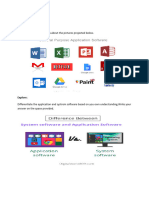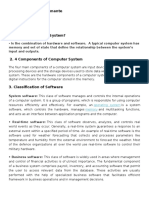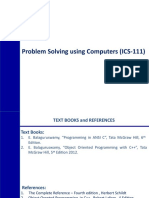0% found this document useful (0 votes)
8 views15 pagesFundamental of Computer System Engineering
The document provides an overview of computer system engineering, detailing the functions of various computer units, memory hierarchy, software types, operating systems, software hierarchy, program language translators, computer networks, video conferencing, internet protocols, and key web terms. It explains concepts such as customized software, open-source software, and performance monitoring software, as well as different types of operating systems and computer viruses. Additionally, it discusses the advantages and disadvantages of video conferencing and the role of protocols like FTP and Telnet in internet communication.
Uploaded by
avishkarpadwal20Copyright
© © All Rights Reserved
We take content rights seriously. If you suspect this is your content, claim it here.
Available Formats
Download as PDF or read online on Scribd
0% found this document useful (0 votes)
8 views15 pagesFundamental of Computer System Engineering
The document provides an overview of computer system engineering, detailing the functions of various computer units, memory hierarchy, software types, operating systems, software hierarchy, program language translators, computer networks, video conferencing, internet protocols, and key web terms. It explains concepts such as customized software, open-source software, and performance monitoring software, as well as different types of operating systems and computer viruses. Additionally, it discusses the advantages and disadvantages of video conferencing and the role of protocols like FTP and Telnet in internet communication.
Uploaded by
avishkarpadwal20Copyright
© © All Rights Reserved
We take content rights seriously. If you suspect this is your content, claim it here.
Available Formats
Download as PDF or read online on Scribd
/ 15

























































